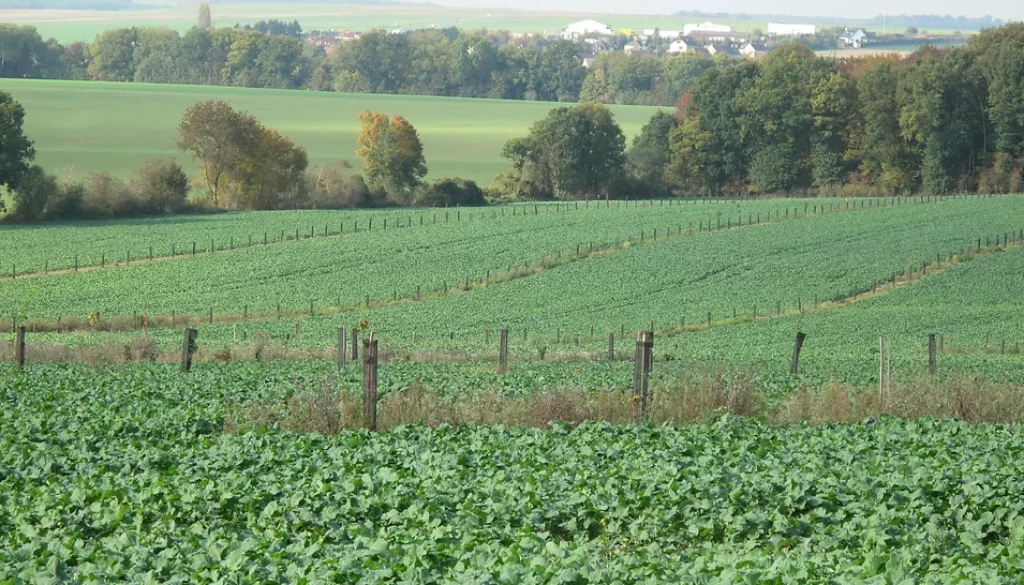Belgium
AGROFORESTRY in BELGIUM
In Belgium, we can find a wide variety of agroforestry systems, ranging from alley cropping, tree lines surrounding fields, orchards, hedges (with or without valuable-trees) to riparian buffers. But also within the free range areas of poultry, pigs or deer we can increasingly find silvopastoral systems, besides the more classical trees on grazing land for cows.
Farmer’s motivation for planting is very diverse. However, we have observed a significant surge of interest in agroforestry practices in the last few years, mainly correlated to extreme weather events (both heavy rainfalls and intense drought), illustrating the farmer’s perception of agroforestry practices as a powerful tool to improve systems resilience.
During the last 10 years, we estimate that about 650 hectares of new agroforestry systems (often alley cropping) have been planted. Particularly in the northern part of the country, fruit and nut producing trees are becoming increasingly popular, also in the context of community supported agriculture and short-chain marketing.
Since 2020, a strong dynamic has been established for redevelopment of the hedgerow network, especially in the southern part of the country. This dynamic is backed by strong regional policies (including in a regional program called “Yes, We Plant”) aiming at developing every step of the chain of value (tree nurseries, planting, tree management along with education of the different publics involved).Since then, we estimate that more than 2300 kilometres of mixed hedgerows have been implanted in an agricultural context.
AGROFORESTRY ASSOCIATIONS in BELGIUM
The two main agroforestry associations in Belgium are Agroforestry Vlaanderen (in the North) and AWAF (in the South).
AWAF asbl – Association pour la promotion de l’agroforesterie en Wallonie et à Bruxelles – was created in 2012 on the initiative of practitioners, farmers, advisors and consultants, researchers and associations active in agroforestry. Today, the number of members is close to 40.
Activities consist in the promotion of agroforestry, in all its forms, by conferences (5 per year), newsletters, articles and other communication actions, field visits, applied research, discussion with authorities about policies and legislation. Every year, we organise agroforestry training for farmers. We are also involved in two development projects: the first one is a regional project called “Agriculture, Biodiversité et Climat” (Agriculture, Biodiversity and Climate, ABC in short) that aims to support Yes We Plant and promote its operational efficiency. The second one is called “Noix, Noisettes et Châtaignes” (Walnuts, hazelnuts and Chestnuts, NNC in short) and aims at developing a local chain of value for dry fruits in Wallonia.
Agroforestry Vlaanderen (Agroforestry in Flanders) is an informal network of about 6 organisations active in Agroforestry, coordinated by ILVO. Its main aim is to strengthen and connect knowledge and experience on agroforestry, through research, participative actions and a great mixture of communication/dissemination activities. Currently, six projects are linked to this group. Agroforestry Vlaanderen hosts the platform website www.agroforestryvlaanderen.be and its related newsletter. The main objective of this platform is to make all agroforestry related information, activities, networks clearly visible and accessible to all. Besides scientific research, we organise excursions (both in Belgium and abroad), field visits, trainings, network meetings, information events, (free) advice for individual farmers engaging in agroforestry, and policy-related communication and interaction.
AGROFORESTRY POLICIES in BELGIUM
Policies usually differ between Flanders and Wallonia. While in Flanders, the ‘agroforestry’ submeasure 8.2 is applied, it is not in Wallonia. Currently, in Wallonia, agroforestry development is mainly promoted by regional financial aids (80 to 100% of eligible costs) of hedgerows, orchards and tree rows plantations.
RELEVANT BELGIAN AGROFORESTRY WEBSITES
- www.agroforestryvlaanderen.be
- www.awaf.be
- https://www.foret-pro-bos.eu/fr/
- https://www.transagroforest.eu/fr/
- www.aforclim.be
- www.farm-life.eu
- www.eurafagroforestry.eu/afinet
- www.foodforestinstitute.com/
